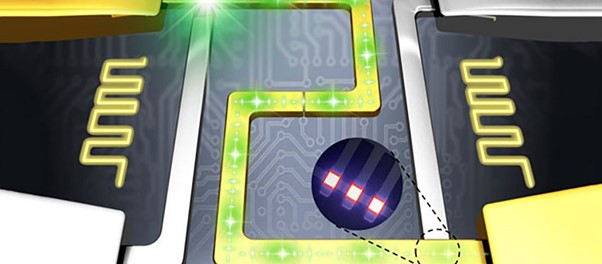The ability to capture and confine light in nano-structures in the form of surface plasmons is important in various areas of research including electronics and sensing. We are developing new platforms to study the interplay between nano-scale electronics and plasmonics. In the last years, we have mainly focussed in improving our understanding how surface plasmons are excited and outcouple from quantum mechanical tunnelling junctions, and how this knowledge can be used to improve plasmon outcoupling efficiencies and gain control over the type of mode that is outcoupled in both molecular junctions and metal—insulator—metal junctions. Now we are interested to extend this knowledge to develop electrically-driven plasmonic components that can be used in different areas of research including non-linear optics, catalysis or sensing.

